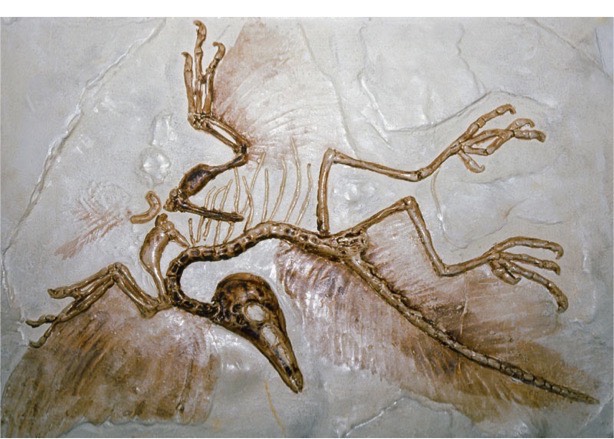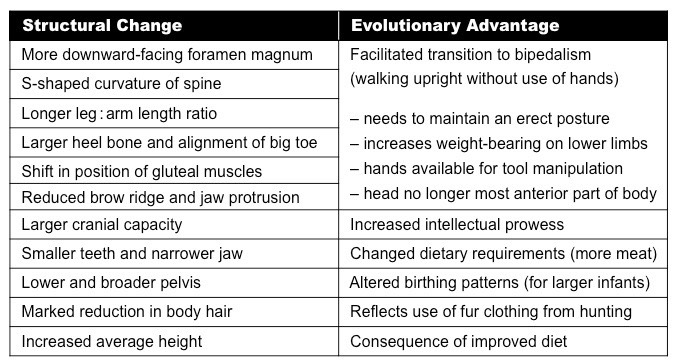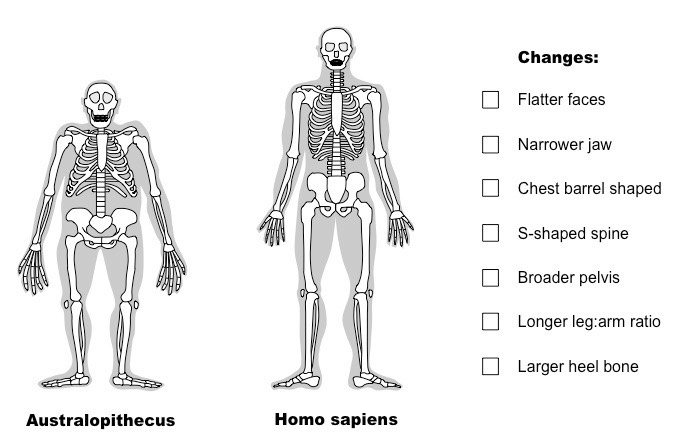![]()
Understanding:
• The fossil record provides evidence for evolution
Something provides evidence for evolution when it demonstrates a change in characteristics from an ancestral form
- The fossil record provides evidence by revealing the features of an ancestor for comparison against living descendants
Fossils
A fossil is the preserved remains or traces of any organism from the remote past
- Preserved remains (body fossils) provide direct evidence of ancestral forms and include bones, teeth, shells, leaves, etc.
- Traces provide indirect evidence of ancestral forms and include footprints, tooth marks, burrows and faeces (coprolite)
The totality of fossils, both discovered and undiscovered, is referred to as the fossil record
- The fossil record shows that over time changes have occurred in the features of living organisms (evolution)
Law of Fossil Succession
Fossils can be dated by determining the age of the rock layer (strata) in which the fossil is found
- Sedimentary rock layers develop in a chronological order, such that lower layers are older and newer strata form on top
- Each strata represents a variable length of time that is classified according to a geological time scale (eons, eras, periods)
Different kinds of organisms are found in rocks of particular ages in a consistent order, indicating a sequence of development
- Prokaryotes appear in the fossil record before eukaryotes
- Ferns appear in the fossil record before flowering plants
- Invertebrates appear in the fossil record before vertebrate species
This chronological sequence of complexity by which characteristics appear to develop is known as the law of fossil succession
- This ordered succession of fossils suggests that newer species likely evolved as a result of changes to ancestral species
The Law of Fossil Succession


⇒ Click on the diagram to compare the evolutionary history of animals and plants
Transitional Fossils
While fossils may provide clues as to evolutionary relationships, it is important to realise that the fossil record is incomplete
- Fossilisation requires an unusual set of specific circumstances in order to occur, meaning very few organisms become fossils
- Only the hard parts of an organism are typically preserved, meaning usually only fragments of remains are discovered
- With limited fossil data, it can be difficult to discern the evolutionary patterns that result from ancestral forms (‘missing links’)
Transitional fossils demonstrate the intermediary forms that occurred over the evolutionary pathway taken by a single genus
- They establish the links between species by exhibiting traits common to both an ancestor and its predicted descendents
- An example of a transitional fossil is archaeopteryx, which links the evolution of dinosaurs (jaws, claws) to birds (feathers)
- As new fossils are discovered, new evolutionary patterns are emerging and old assumptions are challenged
Transitional Fossil – Archaeopteryx

Fossil Evidence
An example of how fossils provide evidence of evolution can be established by comparing hominin skeletons
- Australopithecus is an early hominin ancestor that first appears in the fossil record approximately 4 million years ago
- Comparing these fossils to the bone structure of modern man (Homo sapiens) demonstrates key evolutionary changes
These evolutionary trends (from Australopithecus to Homo sapiens) include:

Comparison of Hominin Fossils

Structure: Skull Jaw Chest Spine Pelvis Arms / Legs Heel All
